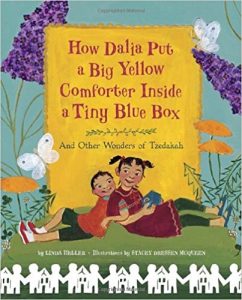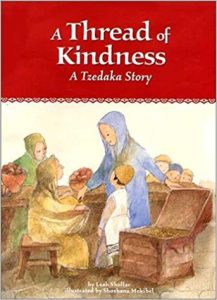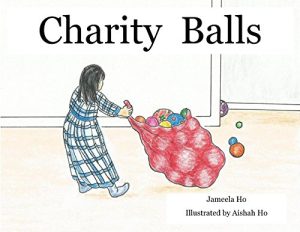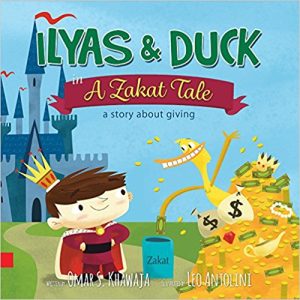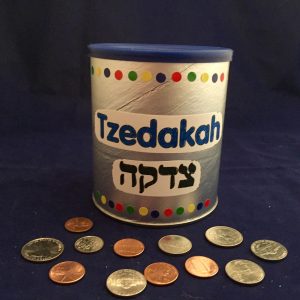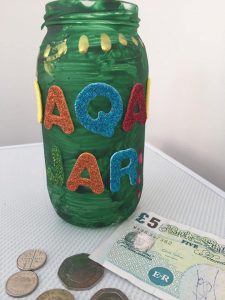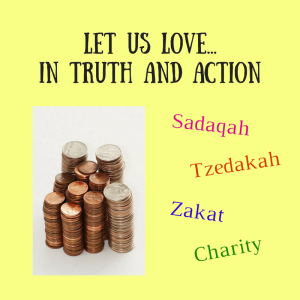 The Revised Common Lectionary readings for Sunday, April 22, 2018 can be found here. This post focuses on loving — not just in word — but also in deed, as found in this portion of the epistolary reading from 1 John, chapter 3.
The Revised Common Lectionary readings for Sunday, April 22, 2018 can be found here. This post focuses on loving — not just in word — but also in deed, as found in this portion of the epistolary reading from 1 John, chapter 3.
3:17 How does God’s love abide in anyone who has the world’s goods and sees a brother or sister in need and yet refuses help?
3:18 Little children, let us love, not in word or speech, but in truth and action.
3:19 And by this we will know that we are from the truth and will reassure our hearts before him….
Like the Golden Rule, the idea that “loving others” must involve some sort of action shows up in all the world’s religious traditions. Yesterday’s post offers sermon ideas for grown-ups; this post focuses on books/crafts for kids.
Judaism (Tzedakah)
In the Jewish tradition, tzedakah is one way of “putting love into action.” While often translated as “charity,” the Hebrew root actually means righteousness, justice, or fairness. Moreover, tzedakah is a religious obligation. One take on tzedakah is that our property/money/wealth is not actually ours; it belongs to God who has given it to us, so we can use it properly.
We have used two tzedakah-themed kids’ books in our program at Jubilee! Community Church. How Dalia Put a Big Yellow Comforter Inside a Tiny Blue Box (Tricycle Press, 2011) works well with kids in preschool through the lower elementary grades. It’s a modern tale that includes a loving sibling relationship, as well as the broader it’s-not-just-about-money meaning of tzedakah. A Thread of Kindness (Hachai Publishing, 2000) works well with slightly older kids (lower-to-mid elementary grades). Set in Old Constantinople, it’s a mystical tale about a poor farmer and his family who are blessed with a chest full of gold coins. They decide to share the money with others in their village, so the thread of kindness will stretch on forever.
Islam (Zakat/Sadaqah)
Similar concepts, known as zakat and sadaqah, exist in the Islamic tradition. Zakat is one of the five pillars of Islam and is obligatory for observant Muslims. Children do not pay zakat, but they can easily participate in sadaqah. The Arabic root of “sadaqah” means “sincerity,” and sadaqah refers to voluntary giving. The idea, in both forms of generosity, is that charitable acts are offered from the heart, help strengthen the entire community, and bring one closer to God/Allah.
Only a few books in English touch on the topics of zakat/sadaqah, but here are two you might consider. Charity Balls: Learning about Sadaqah (Kindle edition only) is for preschool/kindergarten kids. On each page, Rabeah looks for her balls so she can gather them up and give them away to other kids. Kids really enjoy finding the balls on each page and then counting them. Ilyas and Duck: A Zakat Tale (LBK Books, 2016) is the third book in the Ilyas and Duck series. In this whimsical tale, geared to slightly older children (kindergarten/lower elementary), Ilyas explains to Duck that sharing with others lifts up everyone. It’s a story-within-a-story and touches on various reasons why zakat is important both in our relationships with others and with God/Allah.
Putting Love into Action
In all three Abrahamic traditions (Christianity, Judaism, and Islam), spare change boxes are common, and most crafters know you can make them out of all sorts of things — recycled tea boxes, yogurt cups, nut canisters, butter tubs, glass jars, tennis ball canisters, etc. Kids in all cultures and traditions decorate their containers, and then collect their spare change.
To make your craft interfaith, simply encourage kids to decorate their containers with words like “tzedakah,” “zakat,” or “sadaqah” in addition to whatever English/Christian words they are using.
Also, keep in mind that, in all three traditions, the notion of giving goes beyond simply donating money. For older kids, you might come up with a community service project — like helping a parishioner in need or organizing a kids’ clothing drive. Pet food drives also work well in faith communities. Animal shelters almost always need food donations, and in our area, Meals on Wheels also takes donations for their clients’ pets. We’ve also made these simple DIY tug toys as a community service project. It involves braiding — which is a great thing for kids to learn AND a great thing for them to teach one another. Click on the image below to see the how-to video.
Conclusion
It’s easy to assume that the concept of charitable giving is a uniquely Christian one, but that’s not the case. Generosity is a fundamental tenet of all the world’s faith traditions, and helping kids recognize that is an easy way to start breaking down the barriers that often separate us.
Interfaith Sunday School is a weekly blog offering tips for sharing information about the world’s faith traditions to kids. Posts are published on Wednesdays and focus on one of the Revised Common Lectionary readings for the upcoming Sunday. Questions? Contact us at vicki@worldreligions4kids.com.
